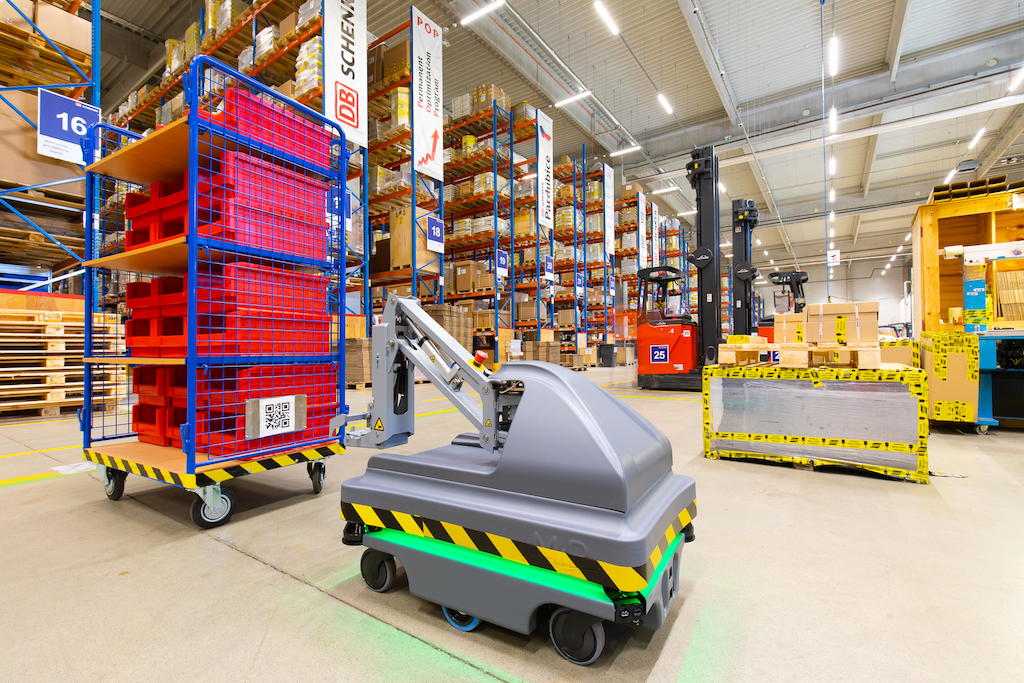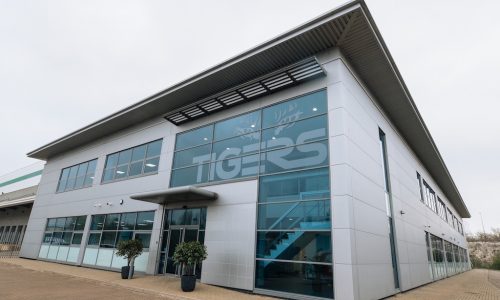
DB Schenker has implemented a new autonomous mobile robot (AMR) at its Contract Logistics site in Pardubice.
In the warehouse, 120 kilometers east of Prague, the robot named MiR Hook 200 helps to detect and transport trolleys to make operations even more efficient.
The robot comes from the Danish technology company Mobile Industrial Robots (MiR) and was deployed in cooperation with DREAMland, a Czech distributor and integrator of autonomous and collaborative robots.
While DB Schenker is using autonomous machines in various countries already, the new installation is the logistic company’s first robot in the Czech Republic.
Tomáš Holomoucký, DB Schenker Managing Director for the Czech Republic: “I am extremely pleased we have successfully implemented our first robot in our regular operations in the Czech Republic. Autonomous solutions such as this will enable us to optimize our logistics processes and relieve our staff by taking over simple warehouse tasks. We are proud to be driving innovation and building the warehouse of the future for our customers.”
Frantisek Kysela, CEO of DREAMland: “We are glad that we were able to help DB Schenker with automated transport at the site in Pardubice. We are looking forward to other joint projects in the future.”
Equipped with a 3D camera and laser scanner, the MiR Hook 200 can automatically detect trolleys ready for pick up by scanning the related QR codes in predefined zones, or by triggering the next task via any mobile device.
The robot’s double battery provides an operating time of 16 hours, after which the AMR is sent to a charging station and fully recharged within three hours.
In operation in Pardubice, the new tool automatically picks up trolleys from the storage area loaded with items for shipping and carries them to the packing station, before transporting empties back to the storage area.
Given a simple scalability, DB Schenker currently considers implementing the AMR at further logistics locations.
With a maximum towing payload of up to 500 kilograms, the robot can avoid both moving and stationary obstacles and adjust its route independently.
It did not need major infrastructure changes for its implementation and could be deployed almost immediately with minimal investment. The MiR can additionally be easily converted to meet changing requirements with exchangeable add-on modules. The programming is done through an intuitive user interface, has a short installation time and could be programmed by DB Schenker staff, eliminating the need for a dedicated technician.
Interesting Fact: Robot is drawn from an old Church Slavonic word, robota, for “servitude,” “forced labour” or “drudgery.”

